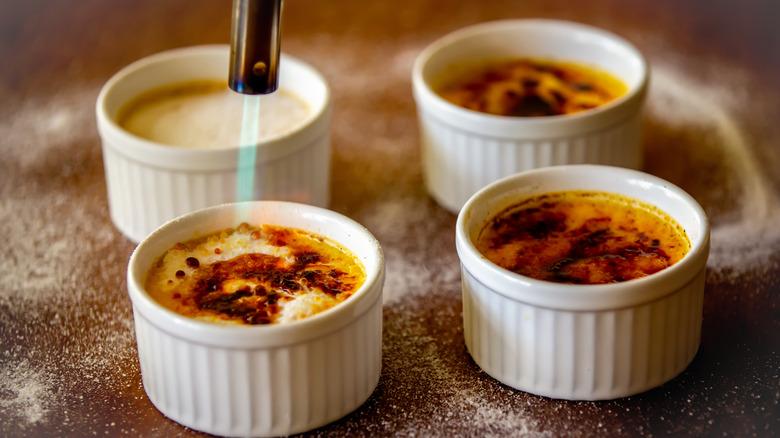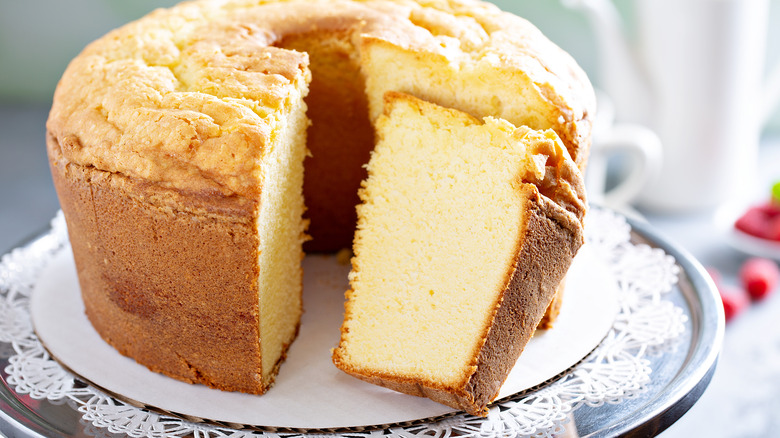The Scientific Reason Toasted Sugar Doesn't Melt
A great way to add more complex flavor to baked goods is to substitute toasted sugar in place of regular old table sugar. King Arthur Baking says that toasted sugar is plain sugar cooked at a low heat to give the effects of caramelization while still keeping its granulated form. The final product might look like brown sugar, but the flavors are vastly different and have alternative uses.
Serious Eats points out that toasted sugar gives regular sugar a subtle but complex caramel flavor. Brown sugars, on the other hand, have a more pronounced caramel flavor and don't always work out as a 1:1 sugar substitute in recipes. The difference between the two sugars is that molasses is still present in brown sugar, which gives its signature flavor and color. It can also alter a recipe's pH, affecting a dough or batter's texture and rise.
Caramel powder can also provide this same flavor but requires some math to be substituted appropriately or added to a recipe. Toasted sugar, on the other hand, is sugar that is caramelized without changing its state, so it works as an easy substitution and adds a light caramel taste. Basically, it's caramel without all the sticky mess. King Arthur Baking points out that this makes it the perfect addition to subtle, light-flavored treats like angel food cakes, shortbreads, or macarons.
Toasted sugar is made through thermal decomposition
Toasted sugar can obtain these flavors by allowing the chemical processes associated with making caramel to occur at a low heat (via Serious Eats). When you toast the sugar for topping your crème brûlée and turn it into a caramel shell, it will appear the sugar is melting. While this is partially true, there is more going on than meets the eye. While the sugar becomes a liquid, it also undergoes a chemical change. Sugar may "melt" into caramel, but it doesn't harden into sugar again once it cools. That's because the simple sucrose molecules have changed into hundreds of other caramelin molecules, per Food 52. This process is referred to as thermal decomposition.
The thermal decomposition used to make caramel typically occurs at high heat, which is why the sugar crystals break down and liquefy simultaneously. Slowly toasting sugar in the oven for several hours allows thermal decomposition without melting. While roasting sugar for up to five hours may sound like a lot of prep work for a single ingredient, Kitchn says that it can also be done more quickly, though carefully, on a stovetop instead. King Arthur Baking also recommends keeping a batch of sugar around for prebaking pie crusts and letting the sugar slowly caramelize with every use.

